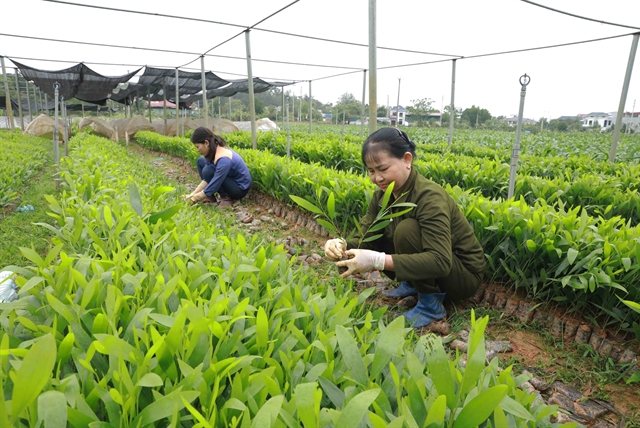 Economy
Economy

 |
| Harvesting tea in Tuyên Quang Province. — VNA/VNS Photo |
HÀ NỘI — Despite numerous challenges in 2024, the northern midlands and mountainous region's gross regional domestic product (GRDP) is expected to be the highest in the country.
Deputy Minister of Planning and Investment Nguyễn Đức Tâm said that this region’s GRDP is estimated to grow by 9.1 per cent.
Several provinces are projected to achieve remarkable growth rates, including Bắc Giang (leading the nation with 13.8 per cent), Phú Thọ (9.5 per cent) and Tuyên Quang (9.04 per cent).
The region’s GRDP at current prices is estimated to exceed VNĐ1 quadrillion (US$39.3 billion), with a per capita GRDP of about VNĐ76 million.
The region’s economic structure has shifted positively, with industry and services accounting for 80.9 per cent of its GRDP and contributing 8.7 percentage points to the region's GRDP overall growth in 2024.
The State budget revenue for the region is expected to reach VNĐ89.2 trillion, a 13 per cent increase over the central government’s target.
Significant improvements in the business environment are also evident. In 2023, five provinces, including Bắc Giang, Phú Thọ, Lạng Sơn, Thái Nguyên and Lào Cai, ranked among the top 30 provinces nationwide in the Provincial Competitiveness Index (PCI).
In 2024, the region had 37 established industrial parks. The number of active businesses filing tax declarations is projected to exceed 44,000, an increase of nearly 2,000 from 2023. The region has also attracted 90 new foreign direct investment (FDI) projects, totalling about $1.8 billion in registered capital.
Eighteen key regional projects are underway, including large-scale developments such as the Tuyên Quang-Hà Giang expressway and Đồng Đăng-Trà Lĩnh expressway, which promise to enhance connectivity and economic integration.
However, Tâm emphasised that the region faces significant challenges. Despite robust growth, its economic scale remains modest, accounting for only eight per cent of the national total. Additionally, its growth model lacks sustainability, as it has yet to leverage scientific and technological advancements and digital transformation fully.
Efforts to address these challenges will be critical in realising the region's potential as a driving force in Việt Nam's economic landscape. — VNS




